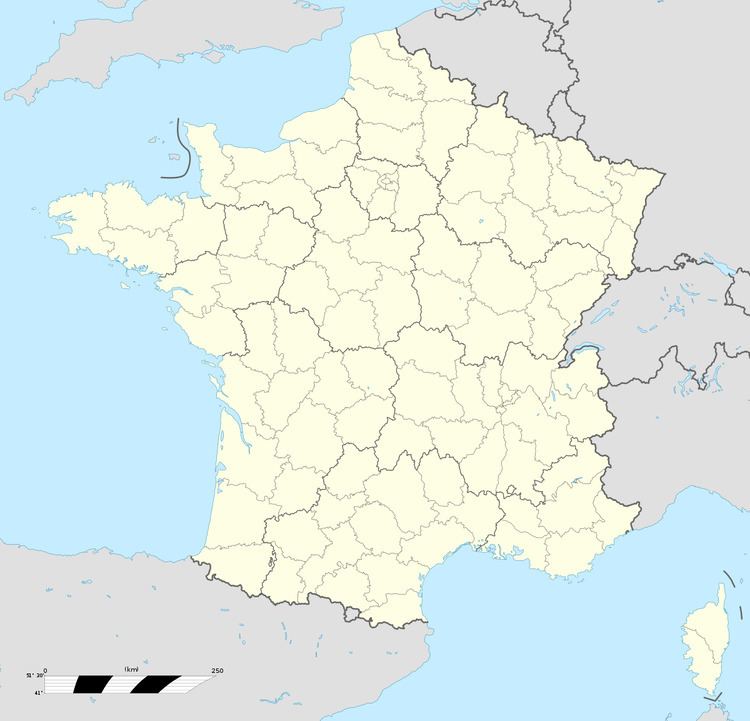Area 7.66 km² | Population (2009) 12,237 Local time Monday 9:17 PM | |
 | ||
Weather 7°C, Wind W at 16 km/h, 83% Humidity | ||
Bully-les-Mines is a commune in the Pas-de-Calais département in northern France. It forms part of the Lens-Liévin urban area, which encompasses 36 French communes and 250,000 inhabitants.
Contents
- Map of 62160 Bully les Mines France
- History
- Misfortunes of Bully
- Administration
- Sights
- Personalities
- References
Map of 62160 Bully-les-Mines, France
History
The name of Bully-les-Mines has frequently had various forms over the centuries : from Bulgi (in 1135), to Bugi (1152), Builli (1157), Bullia (1198), Bully (1270), Boulli (1303), Buylly (1410), Builly-lez-Aix (1486), Builly-lez-Grenay (1511), Builly-en-Gohelle (1569), Bully-en-Gohelle (1709), Bully-Grenay (1750), Bully-en-Gohelle (1782), and finally Bully-les-Mines in 1925.
According to many sources, the name has Gaulish origins. Ricouart proposes that "Bullire" derives from the French "bouillonner," a reference to the source of the river Surgeon in a neighboring commune. The current use of "les mines" indicates the importance of mining to the commune and the region. The train station has maintained the older name of Bully-Grenay, leading to occasional confusion among travellers.
Although the region has been inhabited from prehistory onward, no evidence of prehistoric settlements has yet been found at Bully. The oldest relic so far discovered in the commune is a Celtic bracelet; Bully once belonged to the "Pagus Silvinus" region of the Atrébates. Gallo-Roman discoveries have been numerous within the commune.
During the sixth century, Bully came under the spiritual leadership of the bishop of Cambrai-Arras.
As an integral part of Artois, Bully fell under the domination of the Counts of Flanders from 862 to 1191 before passing with the rest of the region to French control. Governed directly by the French Crown from 1191 to 1237, the town and region remained part of France until 1384, when they submitted to the rule of Burgundy. A brief return to French control between 1477 and 1492 ended in an absorption into Spanish territory, which lasted until the region returned definitively to France with the 1659 Treaty of the Pyrenees.
Misfortunes of Bully
Bully's close proximity to three military strongholds - Arras, Béthune, and Lens - often situated it in the path of war. In 1213 the village was raided; in 1303 it was destroyed completely, even its trees cut down. In 1348 a third of the population fell to the Black Death, which returned four times in the next century, alternating with famines and wars.
In 1537 Bully was sacked by the troops of Louis XII, and similar misfortunes continued until the French took Lens in 1556-1557. By this time Bully was so destitute that the victorious French proved unable to levy a tax on its inhabitants. In 1648, the village billeted troops involved in the Battle of Lens.
From 1709 to 1712, Bully was buffeted by the advances and retreats of armies fighting in the War of the Spanish Succession, a situation aggravated by an epidemic that killed 24 villagers. In 1796, a fire destroyed half the village, an event commemorated by the present-day "Chemin brûlé."
Administration
Michel Vancaille, former vice-president of the Conseil Général of the Pas-de-Calais, served as mayor of Bully-les-Mines from 1989 to 2002, when he was replaced by fellow Socialist François Lemaire.
Sights
The bell tower of the Church of Saint-Maclou is inscribed in the French registry of historic sites and monuments.
Information provided by : Mérimée, base de données du Ministère de la culture
